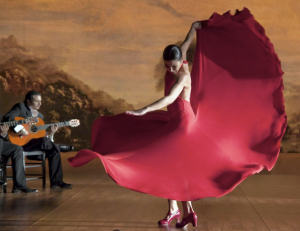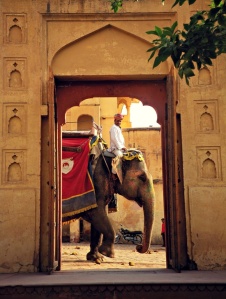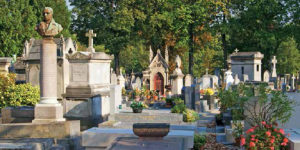When compiling a list of the most iconic hotels in Europe, you’re truly spoilt for choice. Something our top five have whittled down to a fine art.
 Ritz Paris
Ritz Paris
It’s 1944, the Nazis are leaving Paris, and Ernest Hemingway, armed with a machine gun and a ragtag team of soldiers has come to reclaim one of his beloved—the Ritz Paris. As legends go, Ritz Paris is like the sophic grandfather with too many tales up his sleeve. This is where Coco Chanel lived for three decades, where Proust wrote parts of Remembrance of Things Past in peace, where F. Scott Fitzgerald found an appropriate metaphor for diamonds, and where the divas of silent films, Greta Garbo and Marlene Dietrich, discovered a lot to talk about.
The Ritz defined the early hedonism of Paris—when Belle Époque was at its height, when socialites rubbed shoulders with thinkers of the day, when pearls and furs became casual dressing. Considering the grand ambitions César Ritz had for his first exclusive luxury hotel, you can say it’s done rather well for itself.
Now well into its second century, the Ritz continues to impress the demanding guest with its attention to detail in comfort, gastronomy and service. The management may have changed hands (it’s now owned by Egyptian billionaire Mohamed Al-Fayed), but the things so dear to it—its imposing architecture, gilded interiors and appetite-awakening spreads—are reassuringly the same. From delicate apricot-tinted bath linen to fine golden taps, from Louis XVI style furnishings to Persian rugs, the hushed comfort of Ritz Paris is broken only by a deeply felt sigh.
In the footsteps of the legendary first chef of the hotel, Auguste Escoffier, the formal L’Espadon restaurant has always been headed by some of the greatest chefs in the world including today’s Michel Roth. Not to be left behind, the hotel’s Hemingway Bar (a hat doff to one of their favourite guests) is also manned by the best barman in the world—Colin Field. With heavyweights such as these, you can expect your business lunch to turn into an early dinner and a late nightcap without too much effort. Add that to an experience at their heavenly spa and pool and you’d be hard pressed to leave. As many have fallen for the magic of Ritz Paris, so have you. Rest assured, you’re in exceptional company.
Signature pick: If the Imperial Suite at the Ritz Paris reminds you of Marie Antoinette’s boudoir in Versailles, it’s with good reason. An almost exact replica, the suite is furnished with Egyptian mahogany, 18th-century furniture and gold mouldings. If you needed any more validation, it’s also regarded a national monument by the French government. They take these things rather seriously.
Grand Hotel et de Milan
You can say that the fortunes of Grand Hotel et de Milan have been closely tied with La Scala and it wouldn’t be too wrong. Walking distance from the world-renowned opera house, the Grand Hotel has long been the preferred residence of singers, composers, and opera fans—many of whom belong to the royal family. When Giuseppe Verdi came back to his room after staging the successful ‘Othello’ at La Scala, a delirious crowd had laid a ‘loving’ seige. The maestro and the tenor, Tamagno, had to come to the balcony and sing some arias for the waiting crowd. A similar crowd had also gathered when Verdi suffered a stroke at the hotel and the Director had to regularly affix notes regarding his condition outside. As Verdi breathed his last, the city mourned along with every employee at the hotel. They’d lost not just the greatest Italian composer, but also their favourite guest.
Since then, the Grand Hotel has gone through three rounds of extensive renovations—one of them after it was bombed in WWII along with La Scala. Dolled up with many luxurious additions, the hotel’s still held on to things so important to its history. Like the Stigler lift, that’s straight out of the late 19th century. And a part of the great defence wall built by Emperor Maximian, straight out of AD 300! Today, the carefully restored remains of the wall occupy pride of place in their wine cellar.
Every room in the Grand Hotel et de Milan is subtly furnished with period furniture and Italian marble. The loving attention given to its decoration over the centuries has placed it in the top rank of enchanting modern hotels. And if guests such as Tamara de Lempicka, Vittorio De Sica and Richard Burton have come away impressed, we think, so would you.
Signature pick: The Don Carlos restaurant at the hotel has an intimate setting with paintings, sketches and scenes for La Scala Theatre Museum. With traditional Italian cuisine served under antique silver chandeliers, you can expect excellent service in an elegant atmosphere.
Hotel Adlon Kempinski, Berlin
Hotel Adlon Kempinski has survived two world wars, one cold war, a devastating fire, and a complete shutdown. No, really. It was demolished in 1984 to make way for a residential complex. But quite like the proverbial phoenix, the hotel has risen again, its former glory and nail fittings intact.
But first. A look at its illustrious history. When Hotel Adlon opened in 1907, it resulted in a number of things. Kaiser Wilhelm II, the last German Emperor, began to believe this was his home. Complete ministries began to believe this was their office. Some noble families sold off their winter palaces to stay there during ball season. And everyone from Einstein to Chaplin added some anecdote to its growing legend.
Hard times finally caught up when after the division of Germany, the hotel found itself on the eastern side. After the Berlin Wall fell in 1989, work started in earnest by the Kempinski group to restore the hotel and everything associated with it. As a place run firmly on the lines of a luxury class hotel, the new establishment has been reassuringly old-world. A lobby that’s lit with piano strains and jazz, restaurants that resound with clinking glasses, and rooms and suites filled with warming silences, the Adlon Kempinski has proven to be quite the worthy successor.
Signature pick: The hotel’s Royal Suite is an opulent combination of Persian carpets, 18th-century French antiques, exquisite Chinese laquerwork, bulletproof glass and bomb-proof, steel-reinforced walls. The new and the old rest comfortably here, just like the rest of the Adlon.
Les Trois Rois, Basel, Switzerland
Voltaire, Napoleon, Wagner. Men of three different vocations and born in three different centuries would still find common ground if they ever met at a dinner party—the exceptional hospitality they enjoyed when they were at Les Trois Rois. As one of the oldest hotels in Europe and the oldest in Basel, Les Trois Rois has seen a diverse and eclectic guest list for sure. Its neo-Classic decor and select objets d’art have always found favour with the aristocrats, noblemen, artistes, thinkers and leaders of the world. And even today, at just a glance, little seems to have changed.
After a massive restoration project in 2006, the hotel opened its doors to reveal every inch of its façade intact, with modern luxuries carefully tucked in. Basel architect Christian Lang took pains to ensure that the national heritage criteria were met while adding under-floor heating and creating a 2 Michelin-starred restaurant in Cheval Blanc. By their own admission that “tradition brings obligations”, Les Trois has a concierge desk that works with predictable Swiss precision and people who’re waiting to oblige your every request.
As full-liveried waiters make their way with carefully balanced champagne flutes, you could very well be in another era. It truly doesn’t get more authentic than this.
Signature pick: The Herzl Room is where Theodor Herzl stayed while laying the foundations for the State of Israel in 1897. Over a hundred years later, this simple yet stylish Junior Room will still have an inspiring effect on you.
Ashford Castle, Cong, Ireland
In this illustrious list, Ashford Castle’s probably the youngest hotel. But as a structure that’s withstood man, nature and time, it’s the granddaddy of them all. First built in 1228 by a family called de Burgo, the castle has changed hands some half a dozen times. And with every new owner, it’s donned a new appearance. In one century it was a defensive castle, in another a French chateaux, and in a third a Victorian neo-Gothic building.
However, every new owner had a grander vision, and today it’s set in 350 acres of parkland (double of what it originally was) and with enough wings to pass off as Hogwarts. With formality and tranquillity being the essential characteristics, the hotel is a succession of impressive public rooms that illustrate a long and proud history—panelled walls, oil paintings, balustrades, suits of armour and magnificent fireplaces. Its richly decorated interior speaks of centuries of care and excellent craftsmanship and its well-manicured gardens hide within its folds a wonderful 9-hole golf course. With all the modern amenities taken care of, the castle also boasts of an extremely advanced equestrian centre and the country’s first Falconry School. The only question that remains is, care to be 13th-century nobility for a few days?
Signature pick: At their atmospheric Dungeon Bar, evening entertainment has resident performers providing traditional Irish music, ballads, poetry and storytelling. Or you could pass the time in the castle with daily showings of John Ford’s ’50 s classic The Quiet Man that was filmed extensively in and around the village of Cong.
Published in JetWings December 2011.









